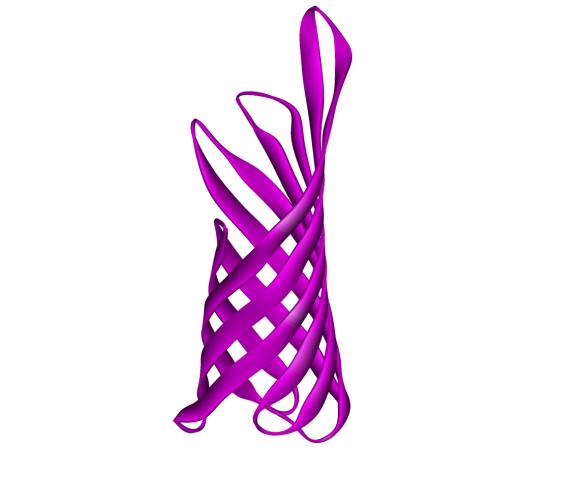A Protein Swiss Army Knife
What does it look like?

Transmembrane domain of OmpA from E. coli.
What is it?
The trouble with working out the function of some proteins is that they seem to have so many roles in different processes. One such protein from the bacterial world is outer membrane protein A (OmpA). Due to the range of functions or potential functions of OmpA, authors in one scientific review of the protein dubbed it a "molecular Swiss army knife" [1], and hence today's title.
The functions of OmpA are numerous and not all of them are beneficial to the life of a bacterium cell. Some of the functions include: maintaining outer membrane structure and integrity, acting as a receptor for bacteriophage (viruses that infect bacteria) and other toxins, bacterial conjugation, involvement in adhesion to cells during infection, involvement in evading the immune system whilst also been a target for the immune system, and finally involvement in biofilm formation. OmpA has also proven to be a good protein to engineer for uses in bio-nanotechnology [2].
The structure shown is the crystal structure on the N-terminal transmembrane section of OmpA from E. coli. The structure consists of 8 β-strands coming together to form a barrel structure (similar to the β-barrel structures for OmpF and LptD seen earlier).
Where did it come from?
The X-ray crystal structure was first solved by Alex Putsch and George Schulz in 1998 [3] and the structure shown here is a later structure from 2000 [4] (PDB code: 1QJP).
[1] S. G. J. Smith, V. Mahon, M. A. Lambert and R. P. Fagan: A molecular Swiss army knife: OmpA structure, function and expression. FEMS Microbiology Letters (2007) 273: 1-11
[2] D. S. Shah, M. B. Thomas, S. Phillips, D. A. Cisneros, A. P. Le Brun, S. A. Holt and J. H. Lakey: Self-assembling layers created by membrane proteins on gold. Biochemical Society Transactions (2007) 35: 522-526
[3] A. Putsch and G. E. Schulz: Structure of the outer membrane protein A transmembrane domain. Nature Structural Biology (1998) 11: 1013-1017
[4] A. Putsch and G. E. Schulz: High-resolution structure of the OmpA membrane domain. Journal of Molecular Biology (2000) 298: 273-282






